Published on
Updated on

Viticulture Information News
Week of 24 February, 2025
Columbia, MO
Contents:
- Grape Bud Mortality Assessment January and February 2025
- Minimum Low Temperatures Recorded in Missouri Jan-Feb 2025
- Determining Cold Injury to Grape Buds
- Items Needed to Determine Bud Injury
Grape Bud Mortality Assessment January and February 2025
Cold temperatures in January and February had minimal impact on grape bud mortality (Table 1). Extreme low temperatures in some counties reached the double digits below zero in January and February (Figure 1).
Table 1. Primary bud mortality of selected grape cultivars in the Augusta and Hermann, Missouri area after extended cold temperatures in January and February 2025.
| Cultivar | Location | Primary bud mortality1 1/29/2025 | Primary bud mortality1 2/25/2025 |
|---|---|---|---|
| % | % | ||
| Catawba | Hermann Area | 0 | 0 |
| Chambourcin | Hermann Area | 0 | 0 |
| Chardonel | Hermann Area | 0 | 0 |
| Concord | Hermann Area | 7 | 0 |
| Traminette | Hermann Area | 4 | 0 |
| Vidal Blanc | Hermann Area | 7 | 4 |
| Vignoles | Hermann Area | 0 | 4 |
| Chambourcin | Dutzow Area | 0 | 0 |
| Vignoles | Dutzow Area | 14 | 4 |
| Cab Franc | Augusta Area | 14 | 0 |
| Chardonel | Augusta Area | ND2 | 0 |
| Chambourcin | Augusta Area | 4 | ND |
| Cynthiana | Augusta Area | 4 | 20 |
| Norton | Augusta Area | 7 | 0 |
| Vidal Blanc | Augusta Area | 4 | 0 |
| Valvin muscat | Augusta Area | 4 | 0 |
1Primary bud mortality assessed by examining 3 count buds on 10 randomly selected canes of each cultivar.
2ND represents no data.
Minimum Low Temperatures Recorded in Missouri Jan-Feb 2025
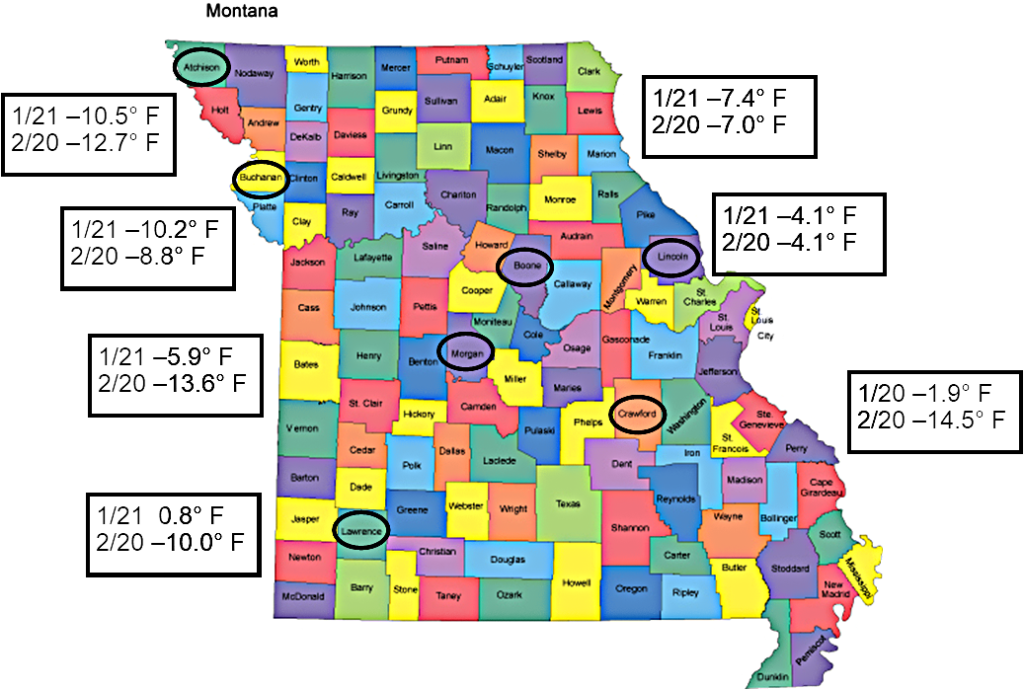
Figure 1. Minimum low temperatures recorded in select Missouri counties in January and February 2025. Date and minimum low temperatures recorded.
Summary
- The grape bud mortality data is relevant to central Missouri and your bud mortality may differ since location and site selection play a role in bud survival
- Therefore check your buds before dormant pruning and setting final bud counts
- Compared to the last 5 years we are approaching bud-break in great shape
Determining Cold-Injury To Grape Buds
The recent extreme cold-temperature events resulting from the “Polar-vortex” in January and February should have you thinking about grape bud injury. A brief primer on the anatomy of a grape bud will help you further understand the evaluation process. The primary bud is in the center, the secondary bud is above the petiole leaf scar and the tertiary bud is on the opposite side of the primary bud directly across from the secondary bud. The longitudinal cross section of a grape bud clearly shows the three buds of a compound grape bud (Figure 1).
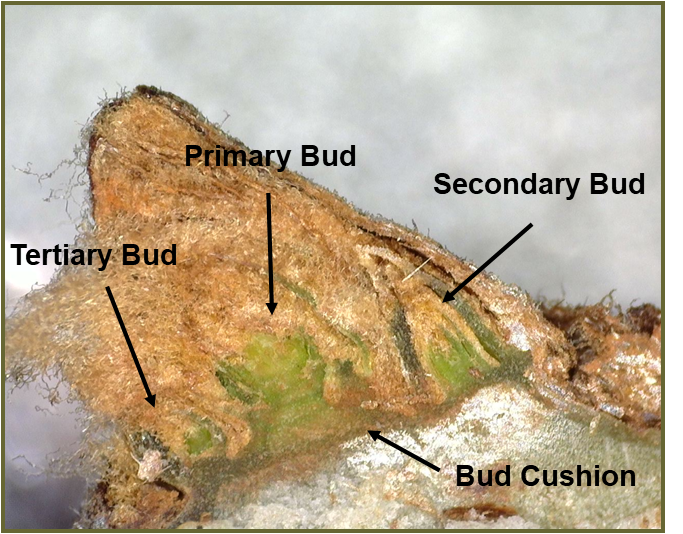
Figure 1. Longitudinal cross-section of a grape bud showing the primary, secondary, and tertiary buds as well as the bud cushion. Photo credit: D.S. Volenberg
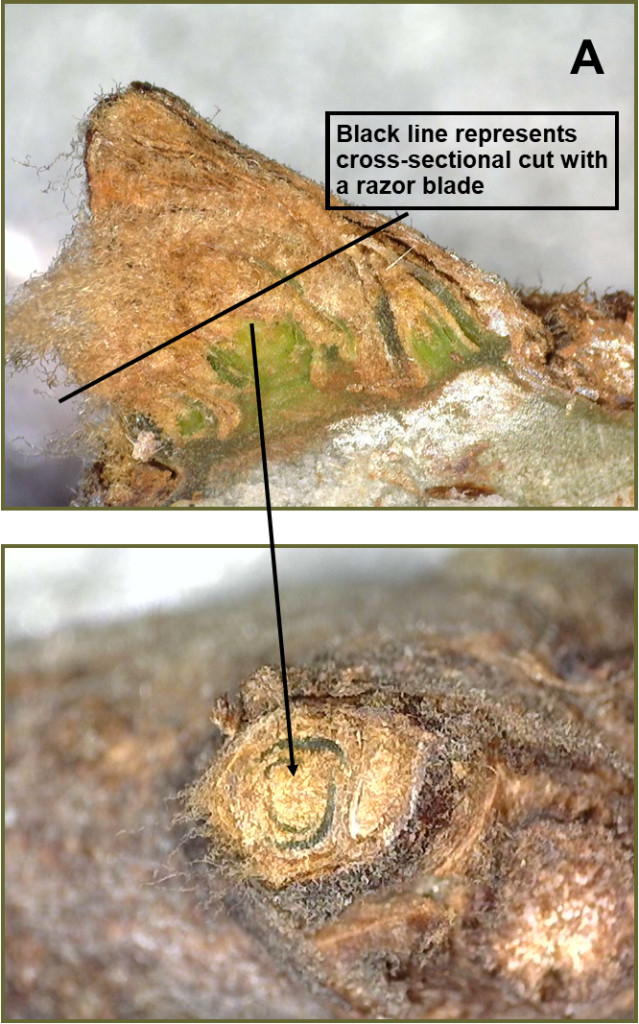
Figure 2, Cross section cut above in A is to shallow and does not allow you to determine if the primary bud is injured in B. Photo credit: D.S. Volenberg
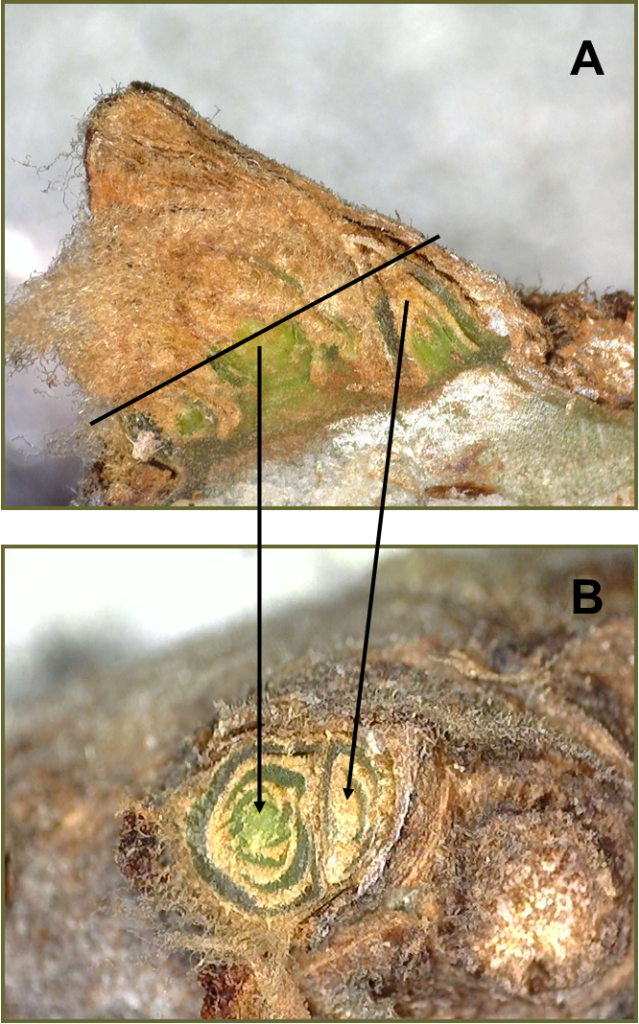
Figure 3. A deeper cross-sectional cut (A) reveals the primary bud being uninjured (B). Notice that the cross-sectional cut still does not reveal if the secondary bud is injured. Photo credit: D.S. Volenberg
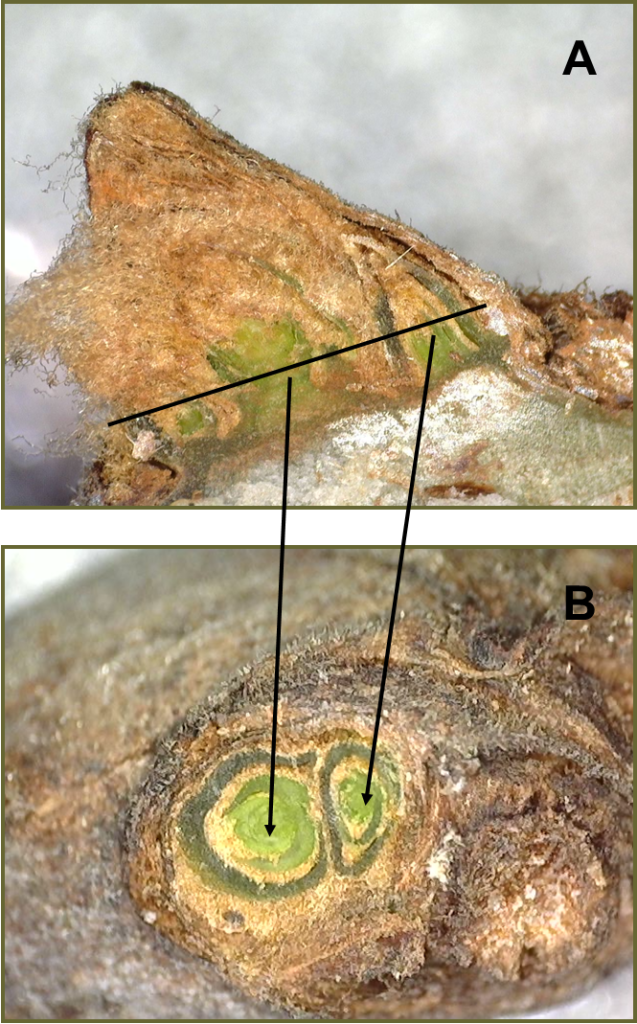
Figure 4. Another cross-sectional cut (A) reveals the secondary bud uninjured (B). The tertiary bud is still not visible. Photo credit: D.S. Volenberg
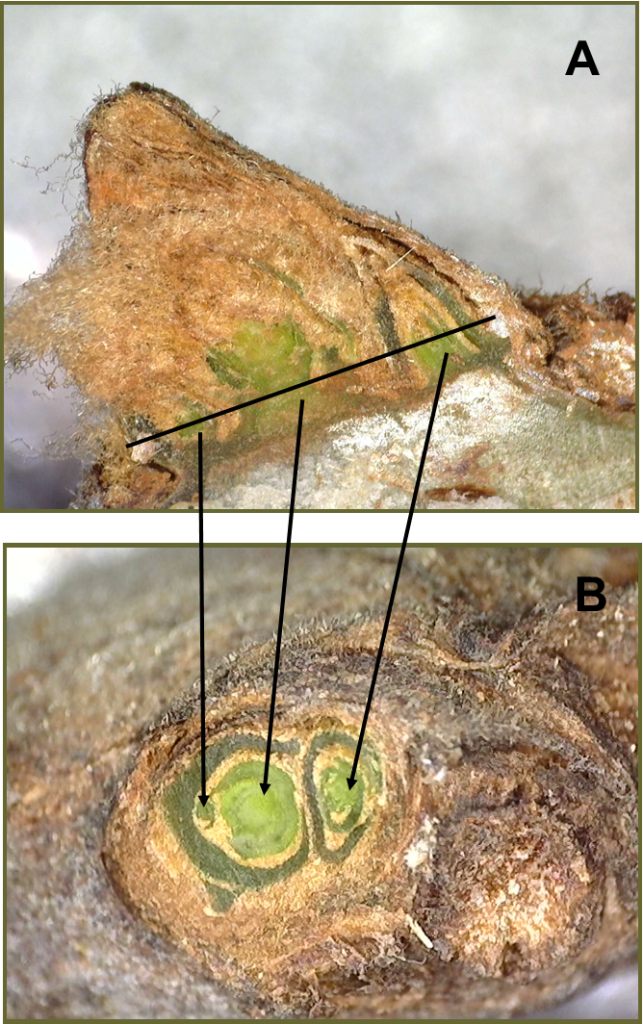
Figure 5. Another cross-sectional cut (A) reveals the tertiary bud uninjured (B). Photo credit: D.S. Volenberg
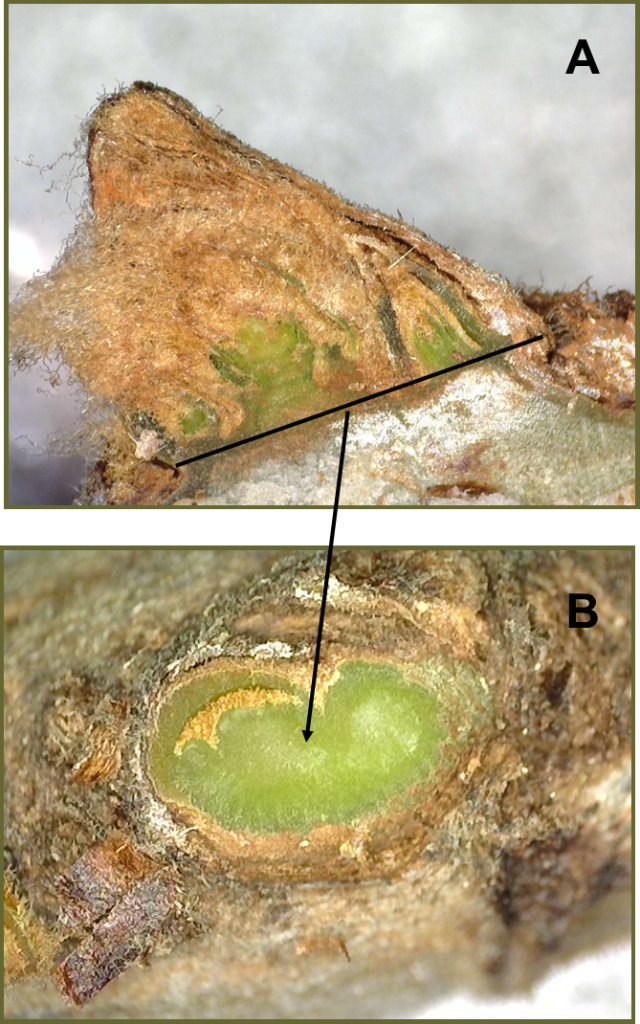
Figure 6. Another cross-sectional cut (A) reveals the bud cushion (B). The bud cushion does not reveal any information of the health of the buds. The only thing the bud cushion reveals is that you have cut too deep into the bud. Photo credit: D.S. Volenberg
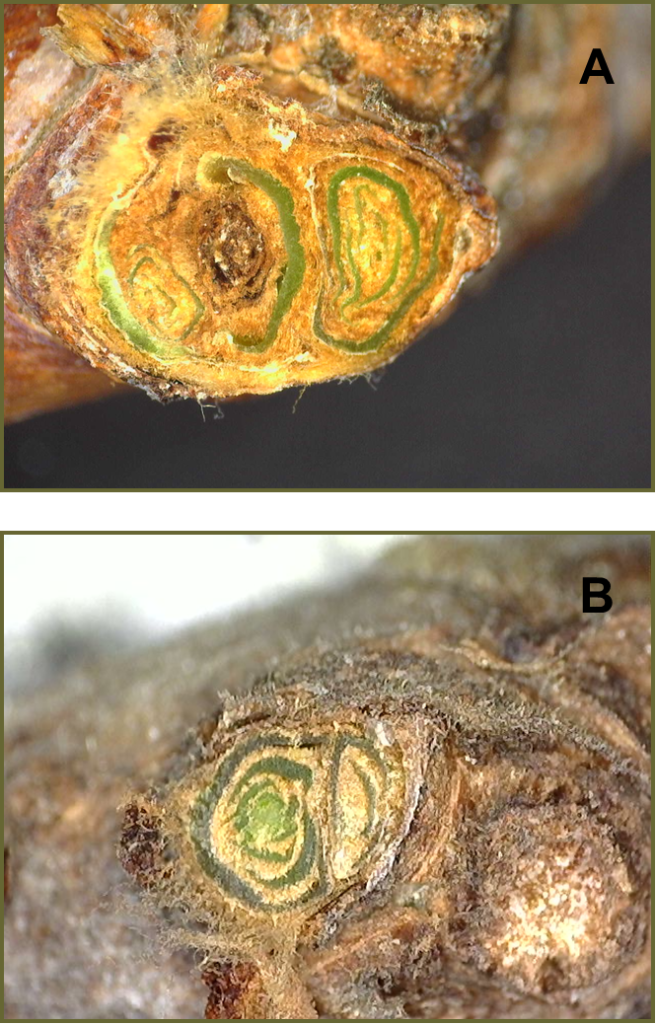
Figure 7. Cold damaged primary bud (A). Notice the brown discoloration of the primary bud. Compare to healthy primary bud (B). Photo credit: D.S. Volenberg
Items you will need to determine bud injury
- Razor blades
- 10X hand lens helps to view cut buds
- Grape canes
- Collect 10 canes with 10 buds. Take a single cane from a vine. The cane should represent the buds you would keep during dormant pruning. Select vines randomly throughout the vineyard. If the vineyard block you are sampling has different terrain (i.e. vines on a bluff and vines on the bottom of the slope) then consider collecting two different samples.
- Keep cultivars separate
- Place canes indoors at approximately 70 °F for 24-48 hours prior to evaluating the buds. This time period allows injured grape buds to oxidize.
- Data collection
- Consider location of bud on the cane. Buds closest to the cordon would be bud 1 and the distal bud would be bud 10. The buds closest to the cordon are more cold hardy.
- Initial assessment of buds may just be primary buds. If bud injury to primary buds is 60% or greater, then consider evaluating secondary buds.
Please do not rely on data of bud damage that your neighbor has collected or data that I may post. Each vineyard block is a separate unit and cultivars respond differently to cold injury. Additionally, past management practices play a large role in the cold sensitivity of the grape buds.
What to do with your bud injury data
- Realize that even in a “normal” year primary bud damage can be near 15%. If your data is 15% or less primary bud damage then you will not need to adjust your dormant pruning.
- Based on bud damage percentages, you can adjust your bud counts to reflect the damage.
- You need to know your grape cultivars fruitfulness. Does the cultivar produce fruit on secondary buds? Does the cultivar produce fruit on basal buds? There is not a lot of data on these two topics for individual cultivars. Most of this information comes from other grape growers who have experienced cold weather events in the past. So reach out to other growers that are growing the same cultivars as you. A simple unwritten rule is that secondary buds produce approximately 1/3 of crop compared to primary buds.
Please scout your vineyards on a regularly scheduled basis in an effort to manage problem pests. This report contains information on scouting reports from specific locations and may not reflect pest problems in your vineyard. If you would like more information on IPM in grapes, please contact Dean Volenberg at 573-882-0476 (office) 573-473-0374 (mobile) or volenbergd@missouri.edu